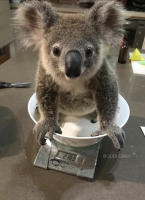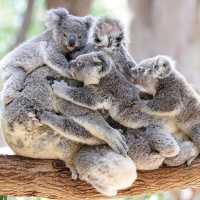I gotta say you are amazing.I do at least 100 miles a week on the bike trainer (around 15+ miles, every day), and I have a personal trainer for an hour four days a week. The rest is walking the dog, or riding a horse. My weights are decidedly average for my age group - bench 105, deadlift 200, squat 180.
It's important to me to stay active, as I watch my parents decline rapidly due to limited mobility and years of not moving properly. I made a commitment to myself and my husband that we would do the best we could to not be in that situation ourselves.
You are using an out of date browser. It may not display this or other websites correctly.
You should upgrade or use an alternative browser.
You should upgrade or use an alternative browser.
**Hermes Chat**
- Thread starter mistikat
- Start date
TPF may earn a commission from merchant affiliate
links, including eBay, Amazon, and others
More options
Who Replied?I relate to this so much. Good on you! I am frustrated when I see my parents unable to stand up from the chair. They are not even old. I decided to not be like them. Everyone thinks other people exercise to lose weight, I exercise so one day I can be a fit old lady carrying my own groceries and being able to stand up without issues.It's important to me to stay active, as I watch my parents decline rapidly due to limited mobility and years of not moving properly. I made a commitment to myself and my husband that we would do the best we could to not be in that situation ourselves.
Fit and limber. A++++ How about maintaining balance? Does anyone pursue exercises for that?I relate to this so much. Good on you! I am frustrated when I see my parents unable to stand up from the chair. They are not even old. I decided to not be like them. Everyone thinks other people exercise to lose weight, I exercise so one day I can be a fit old lady carrying my own groceries and being able to stand up without issues.
D
Deleted member 626500
Maybe you should start a dedicated Koala thread rather than include it in a Hermes Chat thread.I was thinking about the koala pictured in this post. Initially I thought that one eye looked blue (there are a few koalas that have blue eyes) but then I thought the eye had a film over it. And look at the other eye!!! It's been attacked by some corrosive infection and that would be chlamydia which can cause koalas to go blind. Plus it attacks the reproductive and urinary tracts. It's cured by antibiotics. If koalas take them, there's a chance they'll lose the gut bacteria [which they got from their mother] which allows them to eat eucalyptus The leaves are toxic but the gut bacteria and the 18 to 22 hours koalas sleep each day (prolonged digestion) neutralizes the toxicity. I know of a couple of people who got C.difficile from taking antibiotics. am
There's a suburb of Sydney which has the only chlamydia-free koalas in Australia. That population has done well, it's expanded. However developers are leveling eucalyptus in that area so they can build houses and highway infrastructure. Koalas are losing the trees they feed on and live in, that's habitat loss. There is a huge number of eucalyptus species and koalas are fussy eaters who want what they want. Not a problem in a large forest but you get the picture. They get stressed and then they get sick. Supposedly a 'Great Koala Park" was going to be created so they'd have their space and their trees. Hasn't happened. There's nothing on the horizon that suggests the park will ever exist..
I knew domesticated pets, dogs and cats, have their ups and downs, things go well and then they don't. I'm finding out that getting involved with any animals, even wild ones, can be sad and disconcerting. Even at a huge distance from Australia, the problems are there to see.
Thanks for listening. Here's a picture of a happy koala -- they do exist.
View attachment 5297288
Happyish, that's an interesting idea. Not sure, tho, that I want to be that involved with koalas, whereas it's clear to me that I do want to remain committed to Hermes comings and goings, products, user experience, etc. There are facebook groups focused on koalas. Even they are not purely koala, however. Kangaroos jump in, a recent post featured a platypus, etc. What keeps the koala groups focused on their animal is that koalas are so darn cute. They are Mother Nature's teddy bears. In fact, a young koala who has been separated from its mum are often given actual stuffed Teddies to cling to, just as they would with their mums. The teddies comfort them. I read of someone who sent a box of Teddies to a rescue operation in Australia around Christmas. The gift was very welcome. But thanks for your suggestion and interest in koalas. (It would be hard to live in a world w/o koalas. Australia recently declared them on the verge of extinction. If Hermes conked out too I don't know what I'd do. (:Maybe you should start a dedicated Koala thread rather than include it in a Hermes Chat thread.
Went to the Beverly hills location this week and my SA literally showed me the empty drawers where calvis should be. They didn't have anything I was interested in. Not RTW, fine jewelry, shoes, SLGs or bags. He did say they were receiving shipments and would flag a bunch of things for be and text me pictures when they arrived. Are others experiencing the same thing with H?
Yes, every store every country for months now.Went to the Beverly hills location this week and my SA literally showed me the empty drawers where calvis should be. They didn't have anything I was interested in. Not RTW, fine jewelry, shoes, SLGs or bags. He did say they were receiving shipments and would flag a bunch of things for be and text me pictures when they arrived. Are others experiencing the same thing with H?
What this suggests is that the release of A-W Hermes might not occur before, say, September. I don't know, I'm just guessing. Are the shortages of new HS due to Covid shutdowns or other manufacturing glitch?Yes, every store every country for months now.
Yes- was at the BevHills store 2 wks ago and same thing...just barren. When I walked in the SA told me what bags were in the back, probably just to save himself another person asking what they had and him having to say "no, we don't have that..."....Went to the Beverly hills location this week and my SA literally showed me the empty drawers where calvis should be. They didn't have anything I was interested in. Not RTW, fine jewelry, shoes, SLGs or bags. He did say they were receiving shipments and would flag a bunch of things for be and text me pictures when they arrived. Are others experiencing the same thing with H?
Hi everyone!
i would love to hear some opinions on the verrou 21 bag.Just any pros and cons you guys have to say about the bag.
thanks so much in advance!!!
i would love to hear some opinions on the verrou 21 bag.Just any pros and cons you guys have to say about the bag.
thanks so much in advance!!!
Register on TPF! This sidebar then disappears and there are less ads!




 )
)